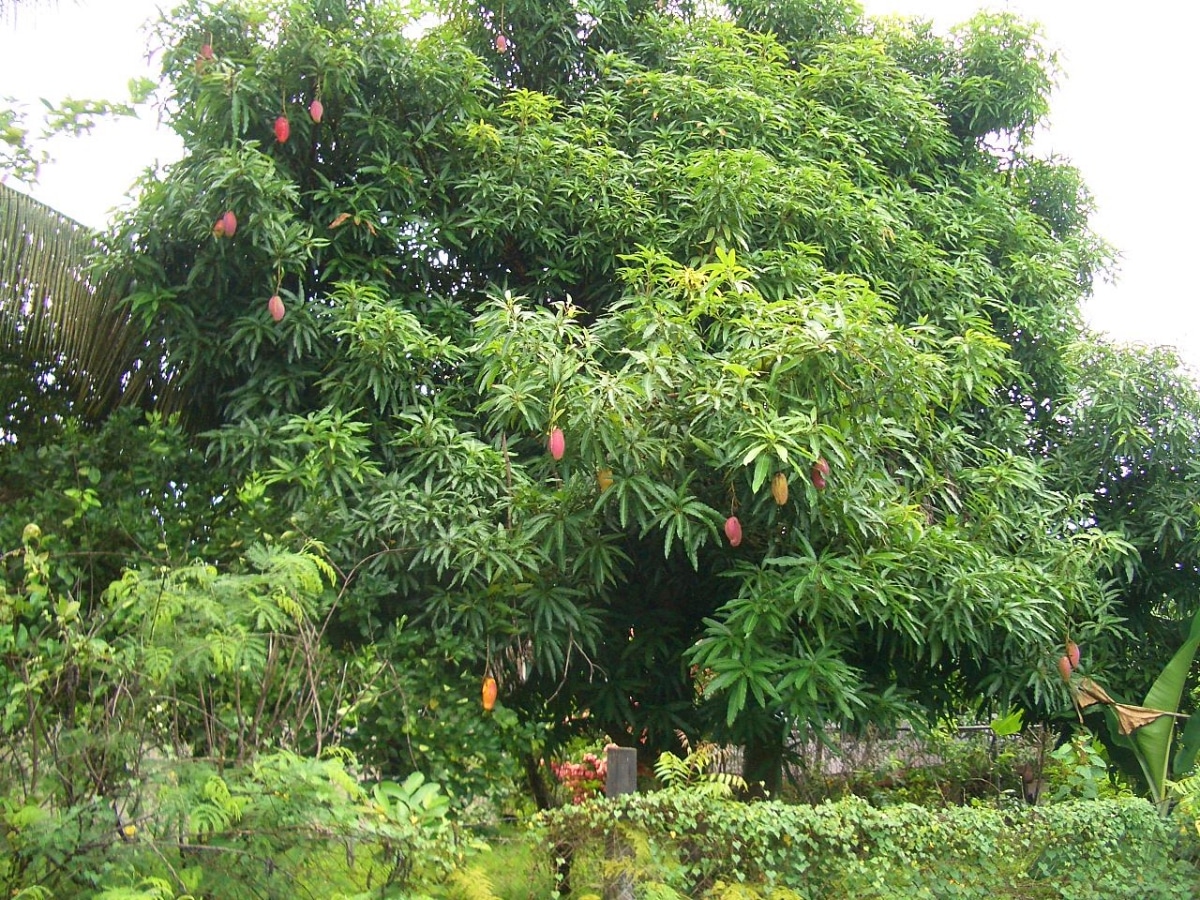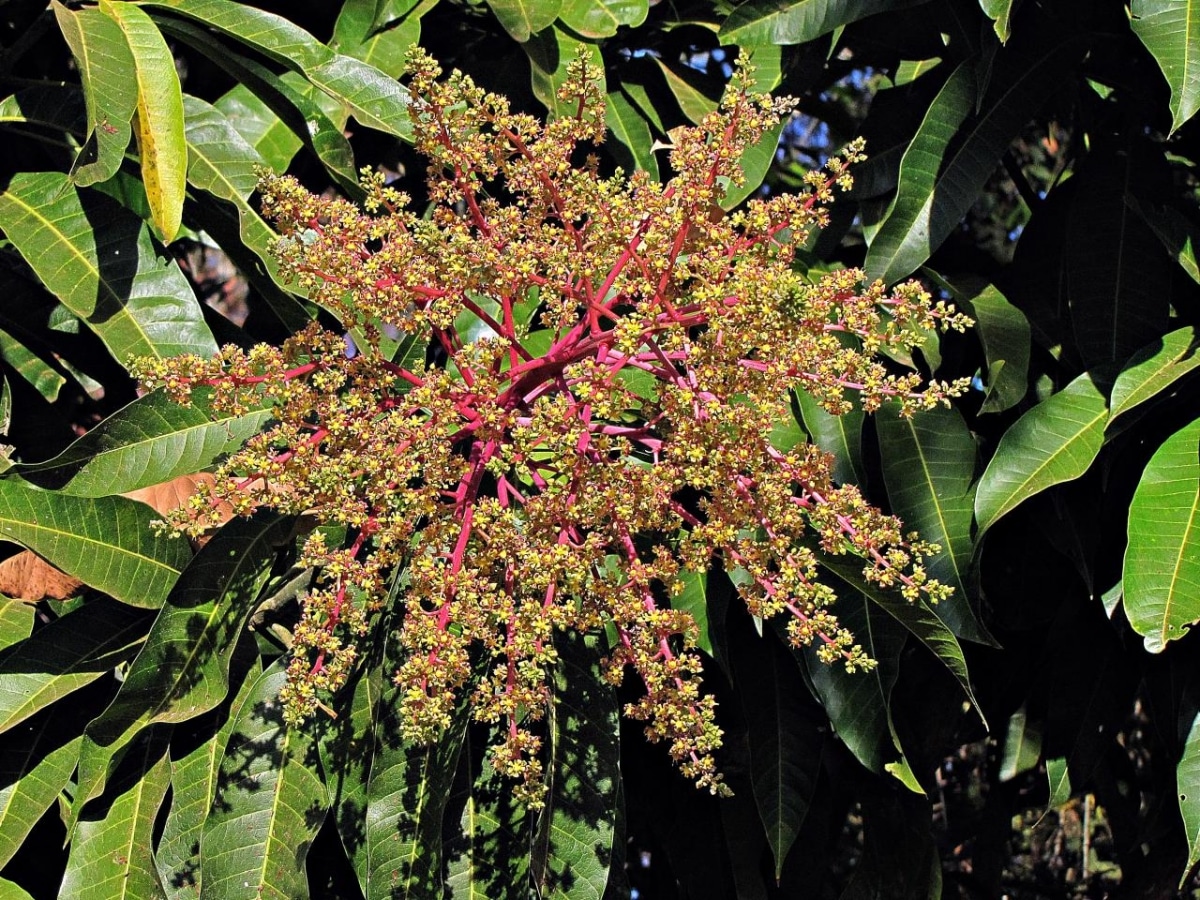
El mango It is one of the most cultivated tropical fruit trees. It is a tree that not only produces sweet fruits and, by the way, with a very pleasant taste, but it is also a plant that you can have, for example, as an isolated specimen, in the relaxation area of your garden to provide shade. in her.
But although many of us would like to have one, unfortunately it is a plant that does not like to be cold. So, its cultivation is recommended only in places where the climate is tropical or subtropical, or in greenhouses, since in the rest it is difficult for it to grow well.
Origin and characteristics of mango

Image – Wikimedia/Vmenkov
Our protagonist is an evergreen tree whose scientific name is Mangifera indicates. It is popularly known as mango or peach of the tropics, and is native to both India and Indochina. It can reach impressive heights; in fact, it is estimated that the maximum height it reaches is 45 meters, although in cultivation it is difficult for it to exceed 20 meters. The leaves are simple, lance-shaped or oblong, dark green in color and about 30 centimeters long.
The flowers are greenish, and sprout in panicles. Once they are pollinated, the fruits ripen. These They are drupes with a yellow-orange pulp, with a sweet taste.. The skin is green and/or reddish or yellowish, and is usually easily removed. Inside the drupe, and almost as long as it, we find a single light brown seed.
Their life expectancy can exceed 100 years.
mango varieties
There are different ones, and they differ mainly by the size of the fruit and the color of its skin. For example:
- AtaulfoFruit: it is a variety that produces small fruits, about 350 grams, with an oblong-oval shape, and the skin is greenish-yellow.
- Keitt: It is shaped like an egg, with pink and greenish skin, and weighs about half a kilo. It can be eaten with a spoon since it hardly has fiber.
- Kent: similar to the previous one, but wider and a little heavier (it can weigh 550 grams). The skin is yellow with a reddish spot.
- osteenFruit: weighing approximately 525 grams, it is an oblong-shaped fruit with purple skin. Like Keitt mangoes, it can also be eaten with a spoon.
- tommy atkins: its shape is oblong-oval, it has orange or red skin and weighs approximately 550 grams.
What uses does it have?

Image - Wikimedia / Mauricio Mercadante
The mango is a fruit tree, and as such it is grown in those regions where the climate is warm. Its fruits can be consumed fresh, or in salads for example. Now, it is not the only use that is given to it.
On the other hand, in some places in Latin America use its leaves to make infusions or to give color to ceramics. Likewise, once it no longer produces more fruit, with the wood of its trunk they make cheap instruments and/or furniture.
How do you take care of the mango?
If you would like to have a mango, then we will tell you everything you need to know so that it grows well:
Location
To get it right it must be in a sunny place, and if possible planted in the ground since it is young. Only in case there is frost in your area, you will have to grow it in a pot to be able to change its location as soon as temperatures drop below 10ºC.
When the time comes, put it in a greenhouse, or inside the house, in a room where a lot of natural light enters. Likewise, it must be away from air currents, since these would dehydrate it.
Soil or substrate
- Garden: grows in soils rich in organic matter and well drained.
- Flower pot: if you are going to have it in a pot, you can put universal cultivation soil (for sale here).
Irrigation

In its natural habitat, the mango receives between 1000 and 3000mm of annual precipitation, concentrated between the months of June/July to October. These are monsoon rains, that is, seasonal. But these do not occur in other parts of the world.
For example, in the Mediterranean it usually rains from late summer to spring, and very irregularly. In addition, the temperatures are cooler than those you enjoy in your place of origin. Therefore, we cannot neglect irrigation.
During the summer, in case it doesn't rain, we will water an average of 3-4 times a week, while the rest of the year we will space out the waterings.
Subscriber
It has to be paid while the good weather lasts, since that is when it is growing. For this, you can use natural fertilizers, since the fruits are suitable for human consumption. For example, guano, compost or the manure of herbivorous animals are good options to fertilize your tree.
Multiplication
The mango is multiplied by seeds and grafts in spring.
Rusticity
Can't stand the cold. Only adult and acclimatized specimens could withstand occasional and very short-term frosts of up to -1ºC.
What do you think of the mango?